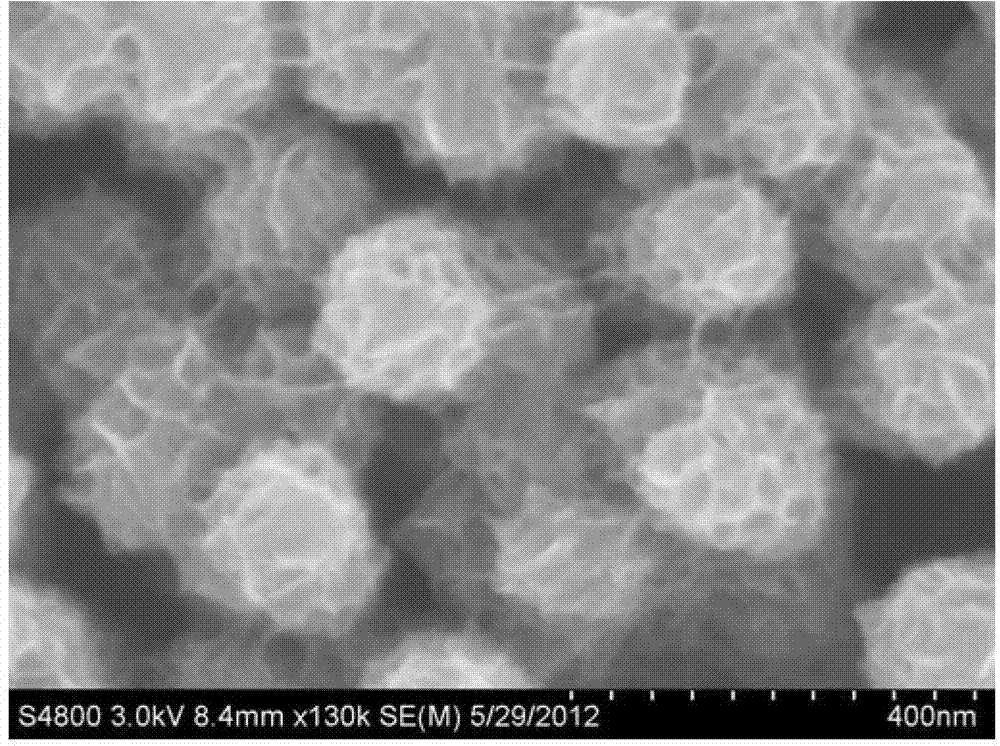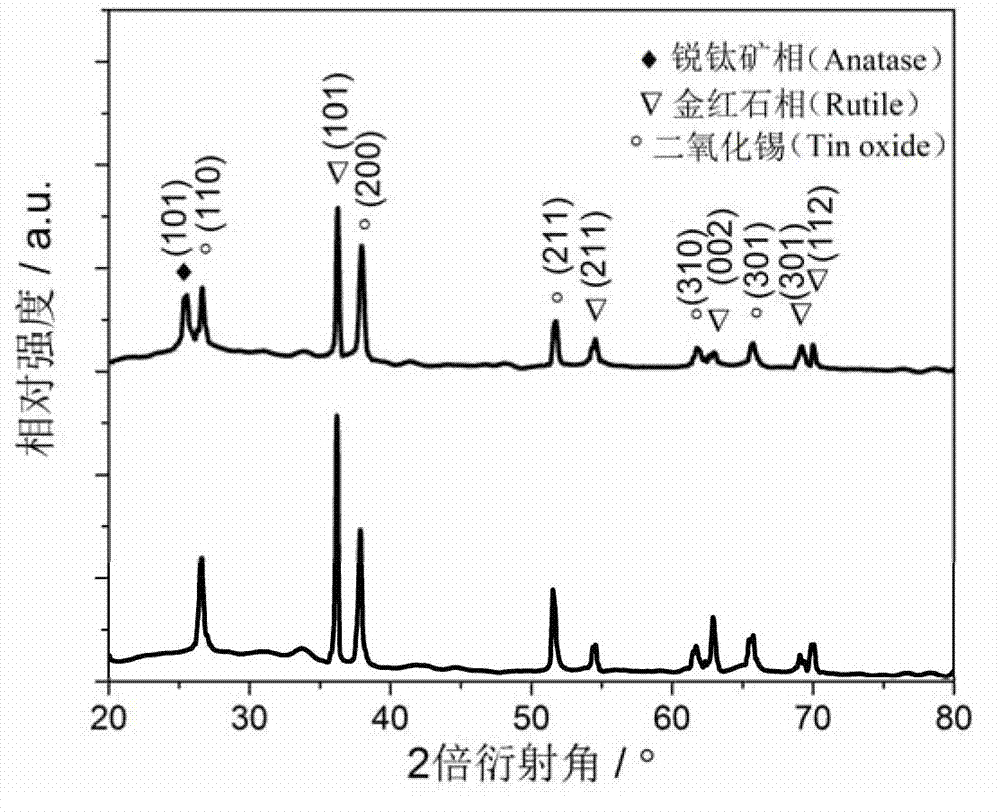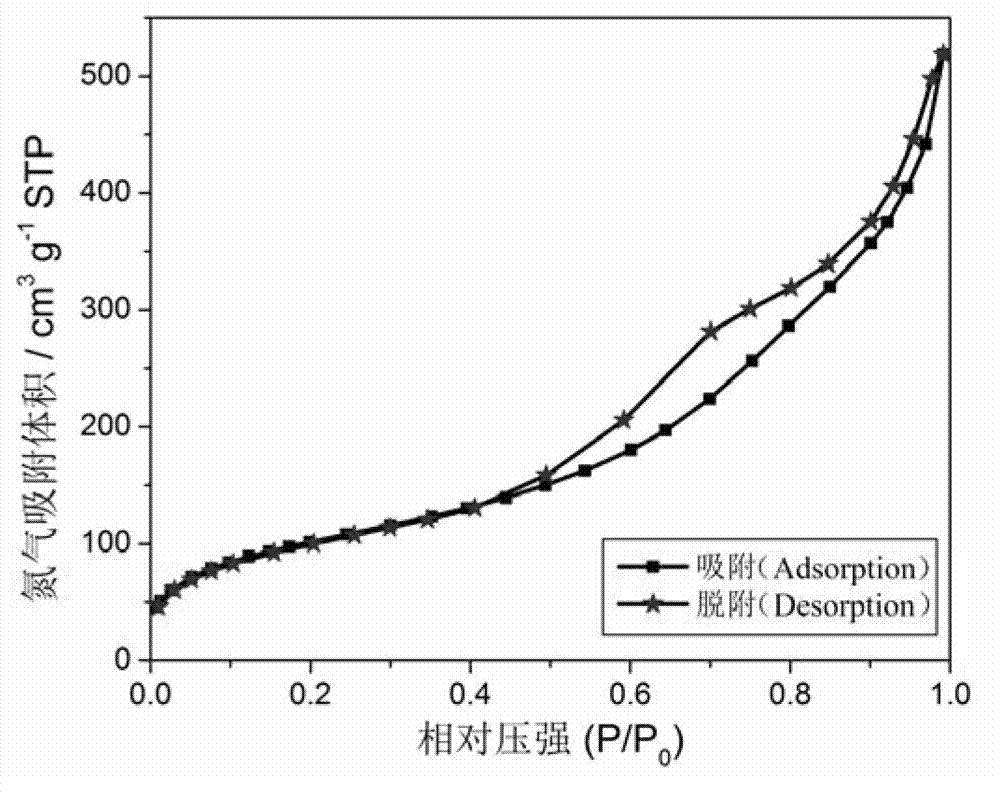Preparation method and application of titanium dioxide heterojunction photoanode
A titanium dioxide and heterojunction technology, applied in the field of material chemistry, can solve problems such as limiting the practical application of titanium dioxide, and achieve the effects of increasing the scope of use, reducing the processing cost, and separating high efficiency
- Summary
- Abstract
- Description
- Claims
- Application Information
AI Technical Summary
Problems solved by technology
Method used
Image
Examples
Embodiment 1
[0037] The preparation process and characterization of titanium dioxide heterojunction photoanode, the specific steps are as follows:
[0038] Fluorine-doped tin dioxide conductive glass with a size of 30×10×2.2mm was ultrasonically cleaned with acetone, ethanol and distilled water respectively to remove grease and dust on the surface. After drying, the fluorine-doped tin dioxide conductive glass was added to the hydrothermal solution and heated at 180°C for 8 hours. As the hydrothermal solution, tetrabutyl titanate hydrochloric acid solution was used, and 1 mL of tetrabutyl titanate was added to a mixture of 25 mL of concentrated hydrochloric acid and 25 mL of distilled water, and magnetically stirred until clarified. After the reaction, the electrode was rinsed with distilled water and air-dried. Then, the electrode was placed in the isopropanol solution of titanium isopropoxide, and solvothermal at 200°C for 24h. Solvothermal solution adopts titanium isopropoxide / isopropa...
Embodiment 2
[0042] A titanium dioxide heterojunction photoanode is used to simulate sunlight photoelectric catalytic degradation of bisphenol A in organic pollutant wastewater. The specific steps are as follows:
[0043] The degradation experiment of bisphenol A was carried out in a 100mL beaker. A three-electrode degradation system is adopted, and the titanium dioxide heterojunction nanoarray is used as the working electrode, and the effective photoanode area is 3cm 2 , the platinum sheet was used as the counter electrode, and saturated calomel was used as the reference electrode. Bisphenol A was prepared into simulated wastewater with a concentration of 20 mg / L by using 0.1 mol / L sodium sulfate deionized aqueous solution, and the treatment volume was 100 mL. Using simulated sunlight as the light source, the light intensity is 10mW / cm 2 . A bias voltage of +0.4 V (vs. saturated calomel electrode) was applied. Add magnetic stirring, and use circulating water cooling system to keep the...
Embodiment 3
[0047] A method for preparing a titanium dioxide heterojunction photoanode, the method comprising the following steps:
[0048] (1) ultrasonically clean the fluorine-doped tin dioxide conductive glass with acetone, ethanol, and distilled water respectively, remove surface grease and dust, and dry;
[0049] (2) adding the fluorine-doped tin dioxide conductive glass treated in step (1) into a hydrothermal solution for hydrothermal treatment, rinsing with distilled water, and drying to obtain rutile phase titanium dioxide nanorods;
[0050] (3) adding rutile-phase titanium dioxide nanorods into a solvothermal solution for solvothermal treatment, then washing with absolute ethanol, drying in the air, and annealing heat treatment to obtain a titanium dioxide heterojunction photoanode.
[0051] Wherein, the hydrothermal solution in step (2) is a mixed solution of tetrabutyl titanate, concentrated hydrochloric acid and distilled water, wherein the volume ratio of tetrabutyl titanate,...
PUM
 Login to View More
Login to View More Abstract
Description
Claims
Application Information
 Login to View More
Login to View More - R&D
- Intellectual Property
- Life Sciences
- Materials
- Tech Scout
- Unparalleled Data Quality
- Higher Quality Content
- 60% Fewer Hallucinations
Browse by: Latest US Patents, China's latest patents, Technical Efficacy Thesaurus, Application Domain, Technology Topic, Popular Technical Reports.
© 2025 PatSnap. All rights reserved.Legal|Privacy policy|Modern Slavery Act Transparency Statement|Sitemap|About US| Contact US: help@patsnap.com



